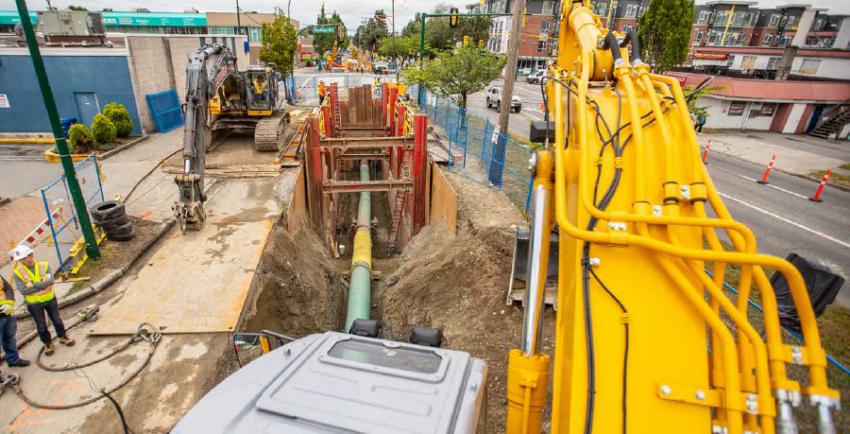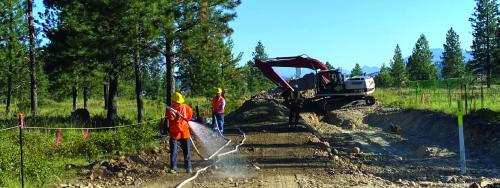We’re able to incorporate safety into the early planning stages of a project because we assemble a project team that’s as committed to project safety as we are.
Suzana Prpic, director corporate emergency management and security, FortisBC explains that when contractors were being considered for the gas line upgrade project, they were required to submit their own safety plan for evaluation. “Only those with the most robust safety plans were even considered,” says Suzana. “Those who were the most aligned with our safety principles were recommended for this project.”
Planning the safest route
One of the project team’s first tasks was to choose the safest route for the 20−kilometre Vancouver to Coquitlam project.
The route selection, plus detailed planning for lane and road closures during construction, were important components of the overall project safety plan, says Suzana. “The traffic management strategy was carefully developed with each municipality and with guidance from traffic management engineers,” she says. “Our goal was to ensure the safety of all field workers, and the public, while maintaining traffic flow and access to businesses and residences.”
Major east-west arterial routes such as East 1st Avenue in Vancouver and Lougheed Highway in Burnaby were chosen for the route instead of side streets. To increase work space—and safety—the City approved the closure of East 1st Avenue between Clark Drive and Nanaimo Street completely for the summer. Lanes were also closed on Lougheed starting in August. Although this would create traffic disruptions, and inconvenience drivers, it was necessary. “Closing lanes was the safest option for everyone,” says Suzana.
Raising awareness increases safety
Once the lane closure plans were finalized, our team got to work developing strategies to let the public know.
Making the public aware of upcoming lane closures—through the media, and strategically placed traffic signage—meant they could plan a new route in advance, and allow for extra time to get where they’re going. “Local traffic only” signs were also posted on side streets near the closures and Vancouver police have been deployed as needed to discourage drivers from cutting through traffic calmed areas.
First responders are always notified of closures, so in the event of an emergency, police, fire and ambulance personnel would be aware of the routes available to them.
Thorough on-site communication boosts project safety
Another way we ensure workers and the public stay safe while work is underway is through daily communication between teams working on the project site. When everyone knows what work is going to take place, they can plan for it.
“We have many different contractors and trades personnel tending to site concerns every day,” says Suzana. “We ensure that teams keep each other informed about what tasks they’re performing so they can implement appropriate safety measures.”
This includes making sure the construction site fence lines are secured and pedestrians and cyclists are supported by traffic management personnel as they move through the area.
The FortisBC Gas Line Upgrades project will continue through 2019. For more information, visit our project page.







